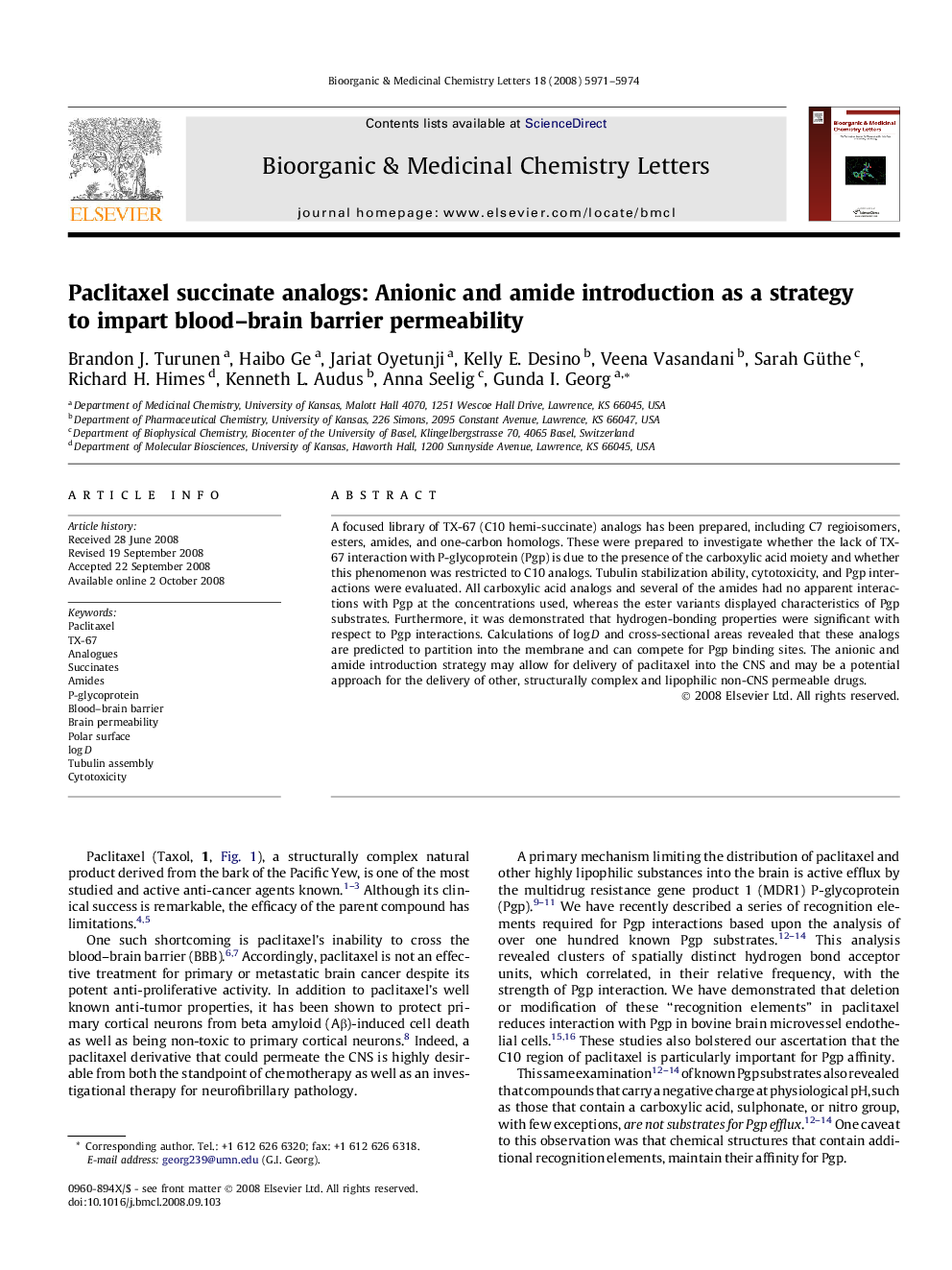| Article ID | Journal | Published Year | Pages | File Type |
|---|---|---|---|---|
| 1364595 | Bioorganic & Medicinal Chemistry Letters | 2008 | 4 Pages |
A focused library of TX-67 (C10 hemi-succinate) analogs has been prepared, including C7 regioisomers, esters, amides, and one-carbon homologs. These were prepared to investigate whether the lack of TX-67 interaction with P-glycoprotein (Pgp) is due to the presence of the carboxylic acid moiety and whether this phenomenon was restricted to C10 analogs. Tubulin stabilization ability, cytotoxicity, and Pgp interactions were evaluated. All carboxylic acid analogs and several of the amides had no apparent interactions with Pgp at the concentrations used, whereas the ester variants displayed characteristics of Pgp substrates. Furthermore, it was demonstrated that hydrogen-bonding properties were significant with respect to Pgp interactions. Calculations of log D and cross-sectional areas revealed that these analogs are predicted to partition into the membrane and can compete for Pgp binding sites. The anionic and amide introduction strategy may allow for delivery of paclitaxel into the CNS and may be a potential approach for the delivery of other, structurally complex and lipophilic non-CNS permeable drugs.
Graphical abstractTX-67 (C10 hemi-succinate) analogs were investigated, including C7 regioisomers, esters, amides, and one-carbon homologs for tubulin stabilization, cytotoxicity, and Pgp interactions. All carboxylic acid analogs and several of the amides had no apparent interactions with Pgp, whereas the ester variants displayed characteristics of Pgp substrates. Furthermore, it was demonstrated that hydrogen-bonding properties were significant with respect to Pgp interactions.Figure optionsDownload full-size imageDownload as PowerPoint slide
